Samsung Galaxy Note 7 vs Samsung Galaxy Note 5

The Samsung Galaxy Note 7 has been discontinued following numerous reports of units catching fire or exploding. In the interest of safety, users who still have a Note 7 in their possession must return the unit to Samsung.
Introduction
Samsung's Galaxy Note phablet is growing up this year. It's got a new curved-edge screen, new higher-precision (to say nothing of waterproof) S Pen, and even a new name, joining the earlier Galaxy S flagships as part of Samsung's club-7.
As the latest handset in an iconic series, the new Note 7 has a lot to measure up to, and the phone's success is going to be measured as much on what it offers itself as what it can do to directly improve upon last year's Note 5.
And while the Galaxy Note 5 saw its share of critical acclaim, it wasn't a phone that arrived without making a few missteps, abandoning expected features found on earlier Note phones. Now the Note 7's here to correct some of those oversights, while attempting to introduce new features of its own.
Design
A softer, curvier Note for 2016
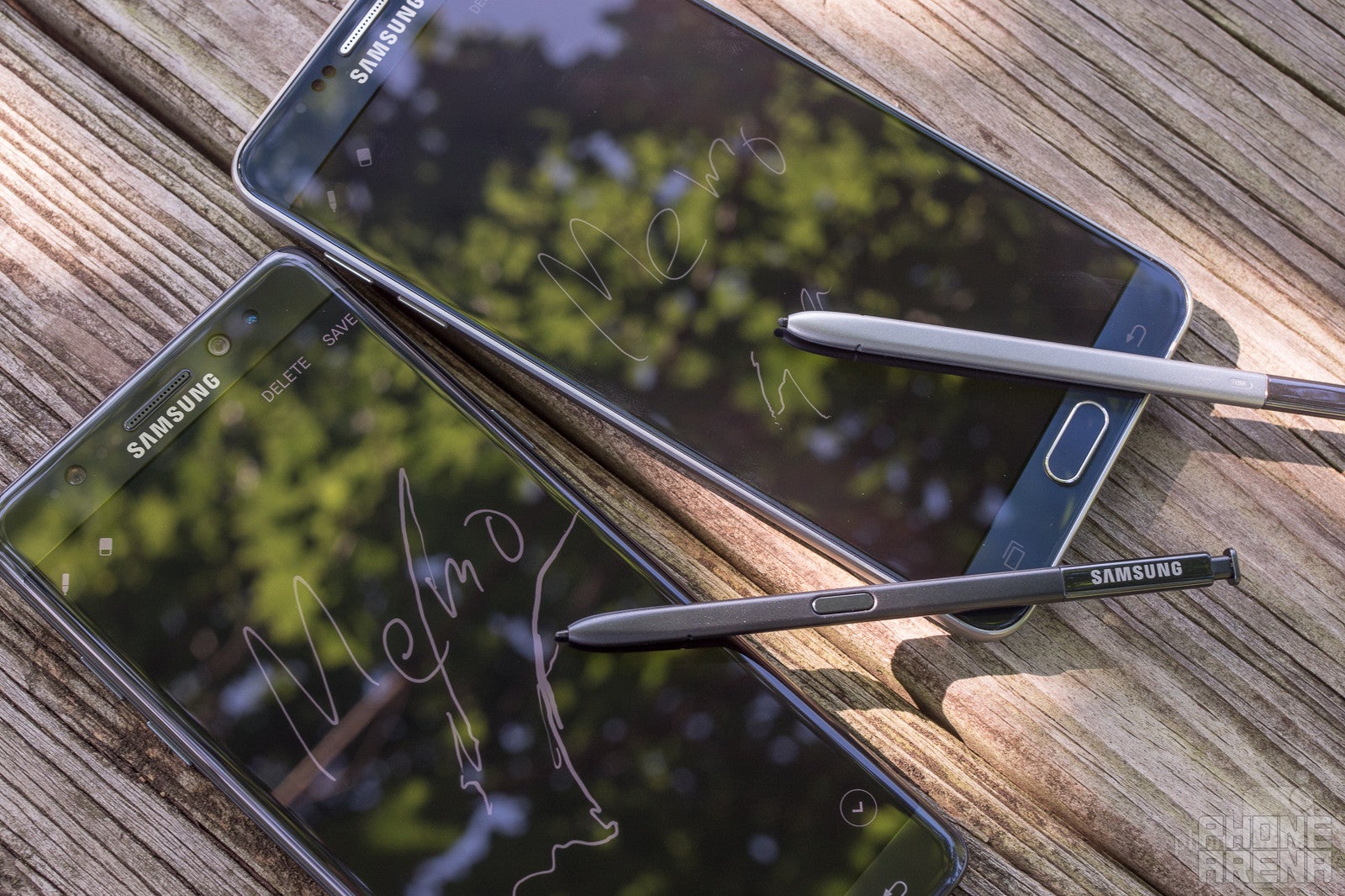
Note7 in black; Note 5 in dark blue
It's impossible to talk about the design of the Note 7 without focusing on its display. We'll hit up some of the more technical aspects of the screen in a minute, but your main takeaway should be that curved is the new flat; with the Galaxy Note 7, there's no Note Edge, nor even a no-stylus S7 edge+ phablet: now the dual-curved edge screen of phones like the Galaxy S7 edge defines the look of the Note 7.
That's a bold move by Samsung, threatening to turn off users who prefer a more traditional flat screen, but luckily the manufacturer does a good job at selling this new look. For one, the move to curved edges helps really make the Note 7's screen dominate the handset's face, giving us a phone that keeps the same screen size of the Note 5 while narrowing width down a smidge. That helps produce a phone that feels really nice to hold.
Elsewhere, the Note 7's design is one of refinement. Components like a smaller camera bump help sell the image of a sleek, polished handset, and subtle changes like the lowering of volume and power buttons help enhance usability, promoting one-handed operation. Next to the Note 7, the Note 5 tends to look a bit old and tired now.
Display
Even with another quad HD panel, the Note 7 picks up more than a few new tricks
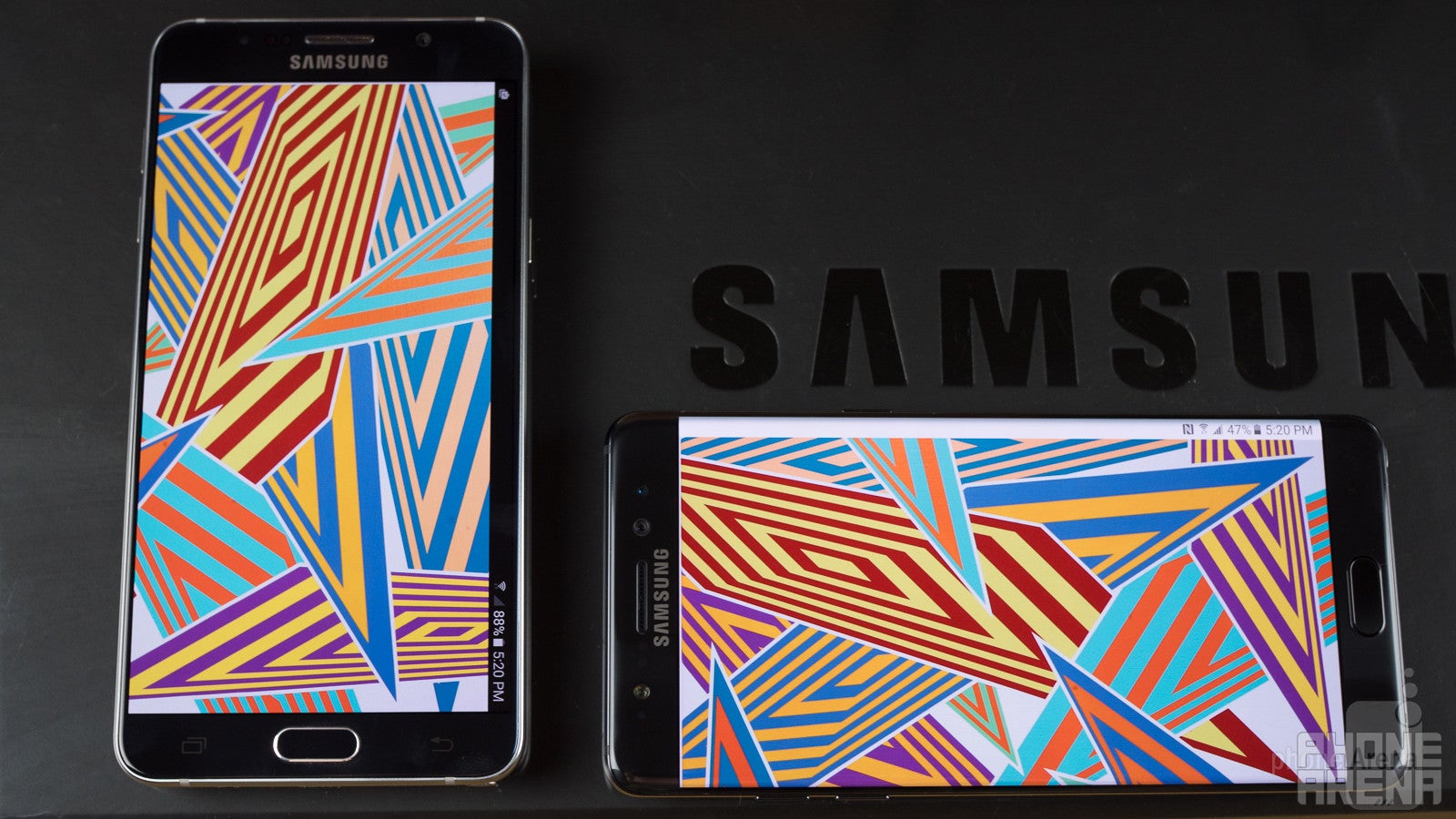
The Note 7's curved-edge screen can take some getting used to, especially if this is your first foray into Samsung's edge world, but if you come around to the new shape of the panel, there's a really well-equipped screen waiting for you.
Samsung's not touching size and resolution, keeping the same 5.7-inch QHD 1440 x 2560 figures we're familiar with from the Note 5. And our screen tests reveal the Note 7 offering comparable brightness levels to last year's phone.
One real improvement is new support for HDR video, letting users enjoy media with enhanced contrast and visual range. Right now it can be a little confusing about exactly where you can find HDR-ready video to view on the Note 7, and mobile HDR standards are still being ironed out. But if you're a user of Netflix or another service ready to hook you up with HDR-10 steaming right now, you can immediately see the difference – and while it may not be a game-changer, it's certainly nice to have.
Interface
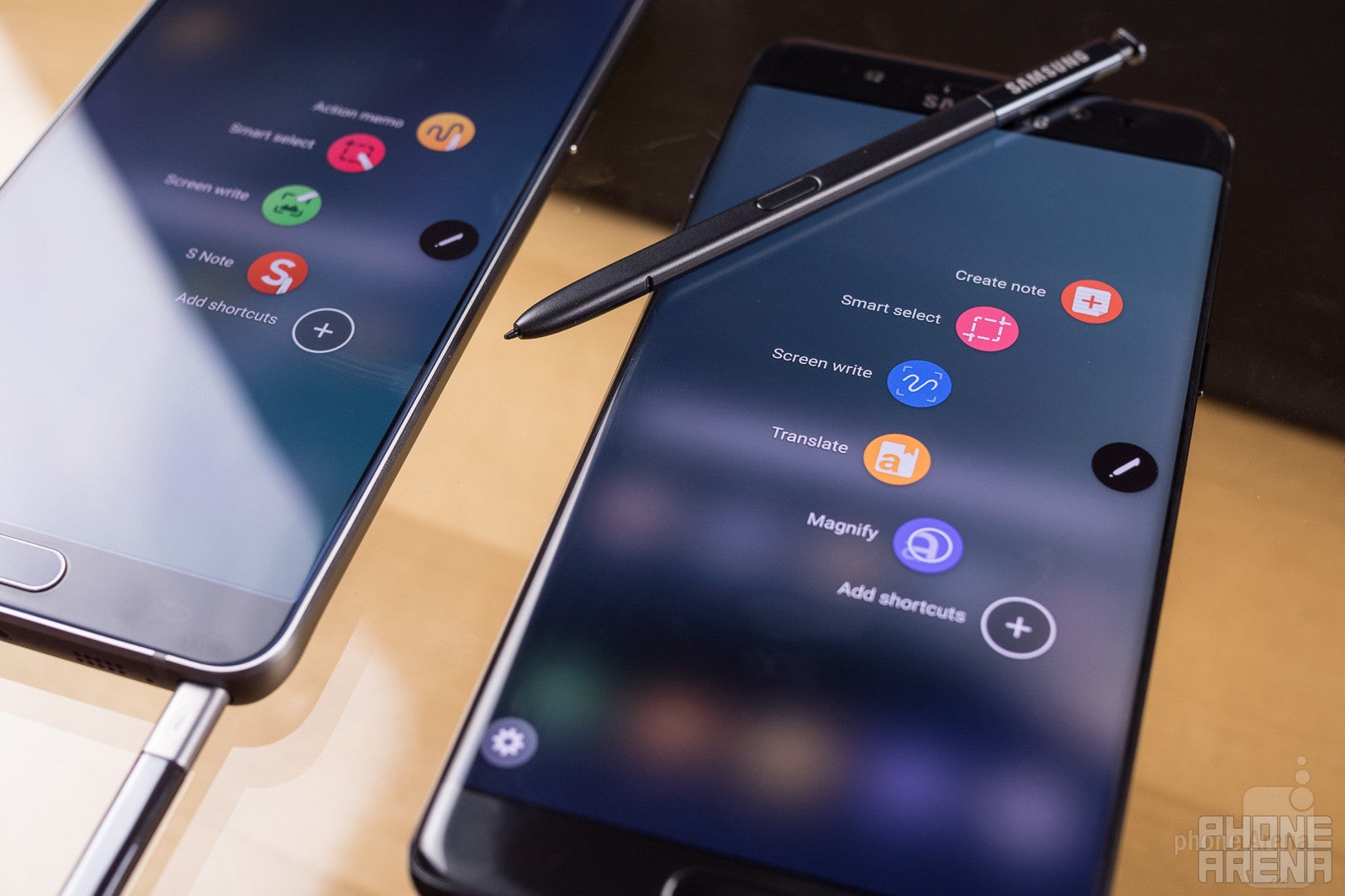
The new UI on the Note 7 comes at us from a few different directions. First there's the evolution of TouchWiz, with the new Grace UX – and it really is as clean and streamlined as Samsung's promised. If you've found older TouchWiz occasionally obtuse and difficult to work with, the Note 7's interface is much more intuitive, with things like the phone's settings menus a lot easier to wade through.
S Pen Air Command is also a big interface concern for a Galaxy Note model, and while the way users access it hasn't changed much since the Note 5, it does pick up some new features like Magnify and Translation, both of which could come in handy in certain scenarios.
There's also a new UI for Samsung's camera app, and like we see elsewhere, the emphasis is on a less cluttered, more accessible interface. We'll circle back to that one as we talk about camera performance, but considering how much use this app's going to get, it's worth pointing out the effort's Samsung's making to improve usability.
Processor and Memory
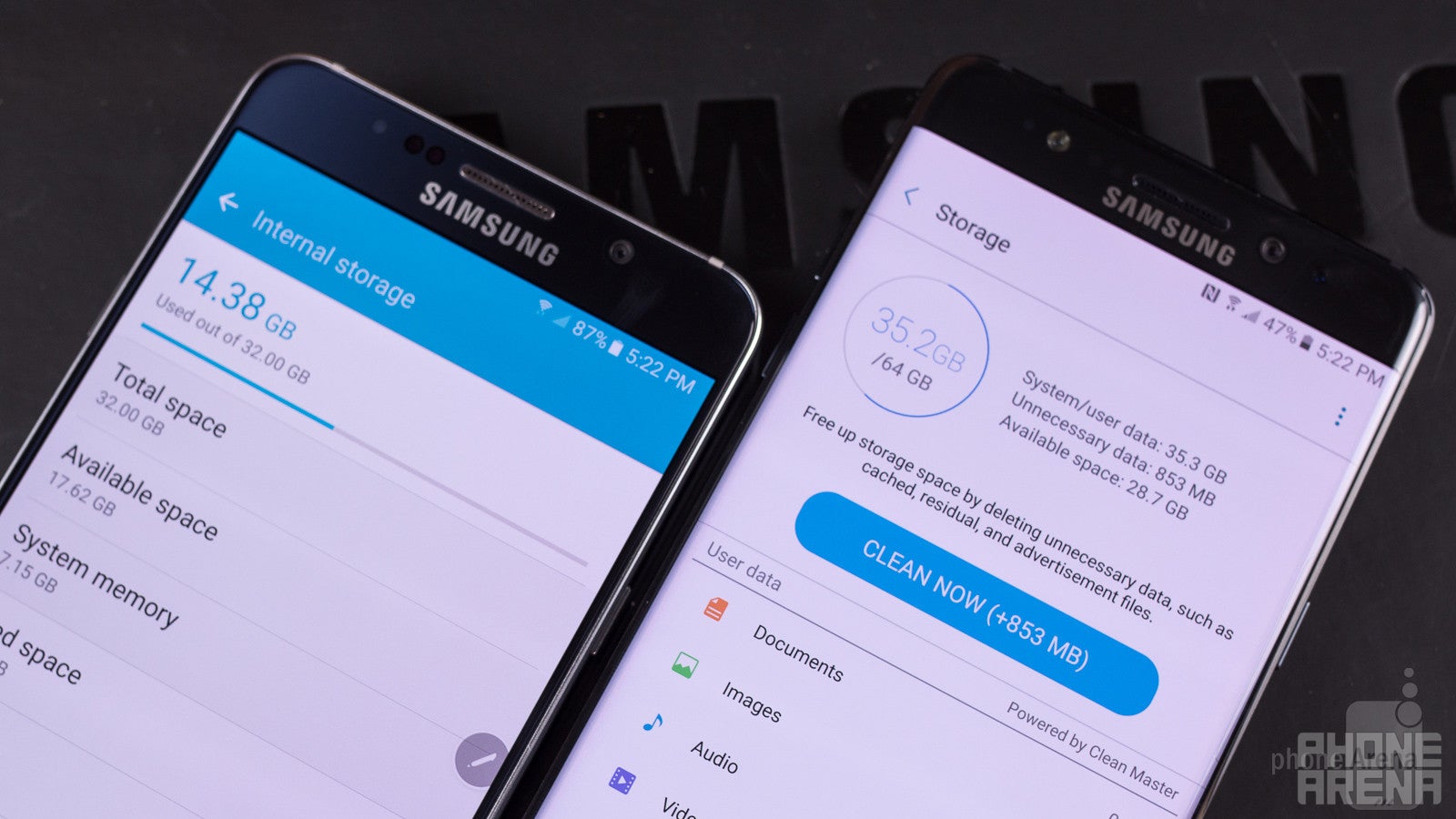
Last year's Galaxy flagships were a departure from Samsung's typical approach to processors, using the company's own Exynos chips alone. With the Note 7, Samsung's back to its market-by-market split between Snapdragon and Exynos processors, much as it did with the Galaxy S7.
While that does spell performance gains over the Note 5, these are gains we’ve already seen before, with the Note 7 running almost identical silicon to the GS7 and GS7 edge – and all these phones, the Note 7 included, are outfitted with 4GB of RAM. That means not much in the way of surprises, but also a very solid, speedy user experience.
With the Note 7, Samsung does follow through on one big upgrade, ditching the Note 5's 32GB storage option and making 64GB the new standard. That's an extremely welcome change, and one we'd be happy with all on its own. But beyond this extra internal storage, we also see Samsung bring back support for microSD expansion. The combination of the two means that the Note 7 is well equipped to handle even steep storage demands.
Internet and connectivity
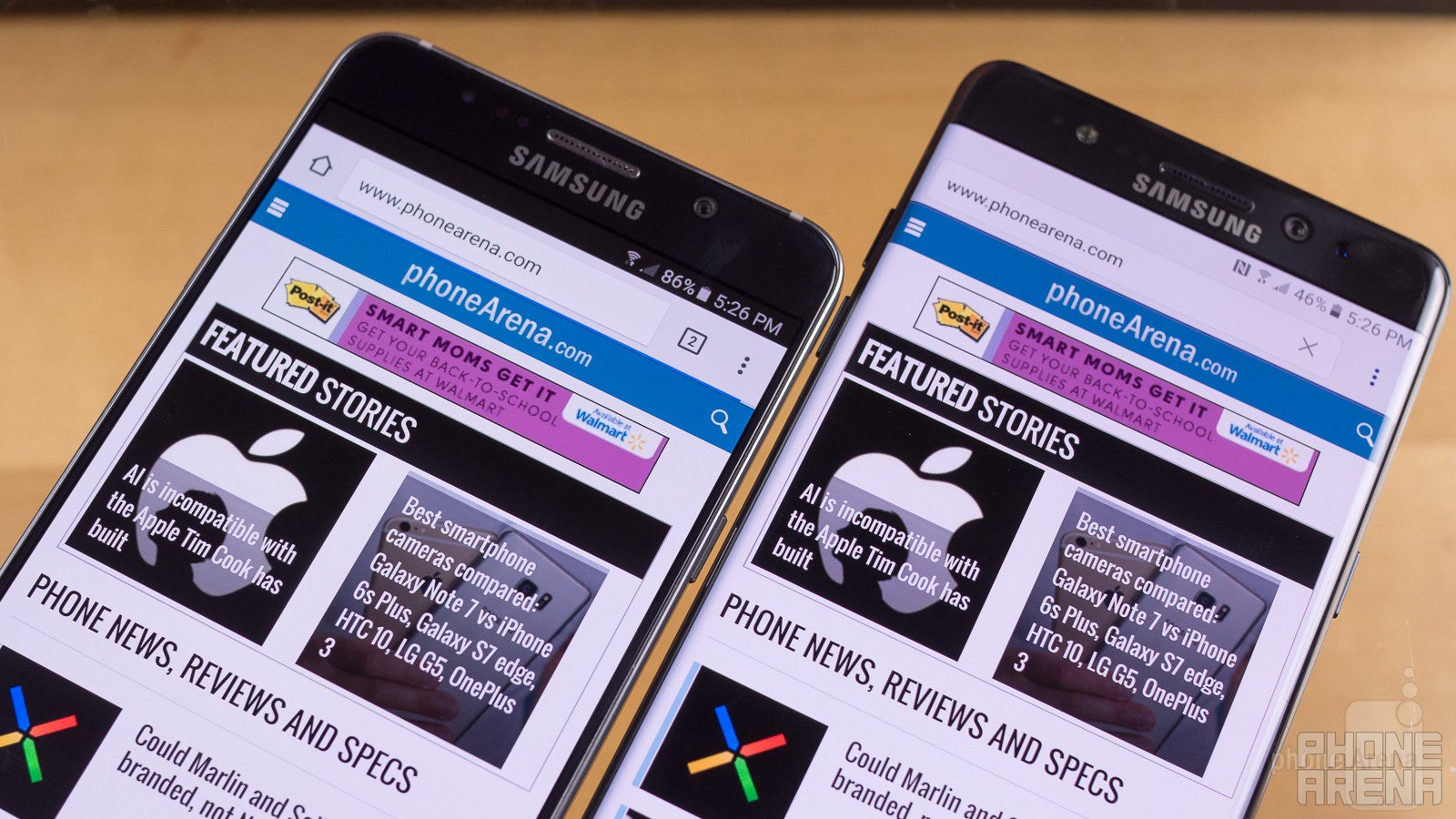
Once again, Samsung brings users the choice of its own browser or Chrome, a matter that will come down largely to personal preference. But the big connectivity news for the Note 7 isn't about its web-browsing acumen or cellular options, but what it's doing in the old-fashioned wired department.
Samsung's moving the phone's wired interface to reversible USB Type-C, a change we've been expecting for some time now – even if we've been a bit unsure about when Samsung would be ready to take the plunge. Understandably, we're looking at a period of adjustment now, where users try and learn what life remains in their existing micro USB cables and accessories, but Samsung’s equipping the Note 7 to handle those muddy waters as best it can, including an adapter that allows microUSB devices to be attached to the phone's USB Type C port.
Camera
When it comes to camera pixels, Samsung takes quality over quantity
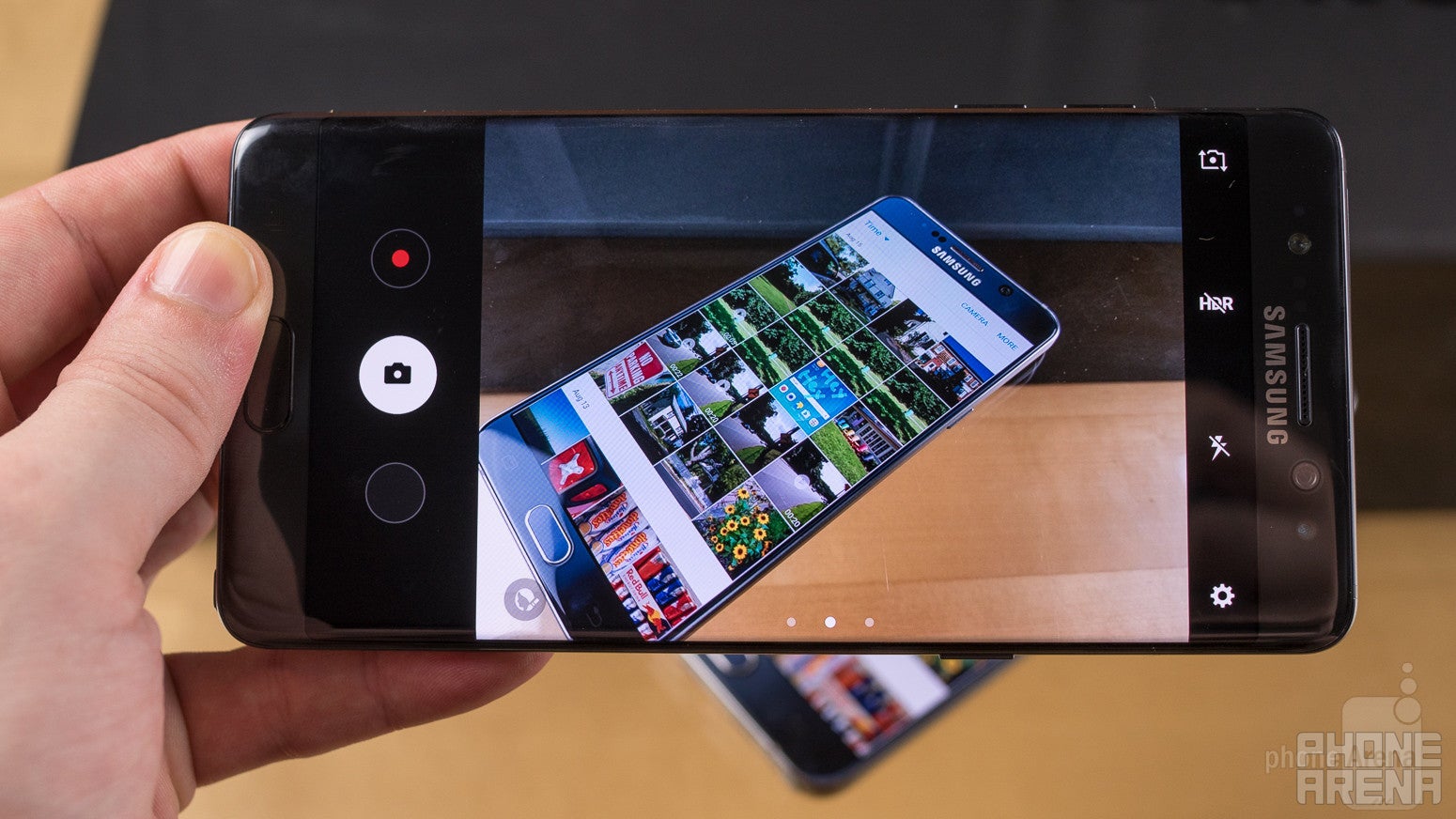
Samsung knows that you don't win customers with raw numbers, but performance, so it wasn't afraid to dial-back the 16MP cameras we found on last year's flagships to 12MP sensors. And indeed, the Note 7's camera is the same 12MP component we got to know earlier this year with the Galaxy S7 and S7 edge.
Images snapped by the Note 7 feature bolder colors, slightly improved contrast, and higher quality exposures than those captured with the Note 5. Nature shots are enhanced as new detail emerges from previously indistinct expanses of green, and indoor pics benefit from improved low-light performance.
The camera software also gets an upgrade, with Samsung moving from a more tap-driven menu to one navigated with the help of swipe gestures. It's slightly less intuitive, especially as you can't easily see where that swipe will lead you until you first make it, but once you learn what's where, it's arguably faster to set your pics up.
Multimedia
Last year's Note 5 may have a slight lead in sound
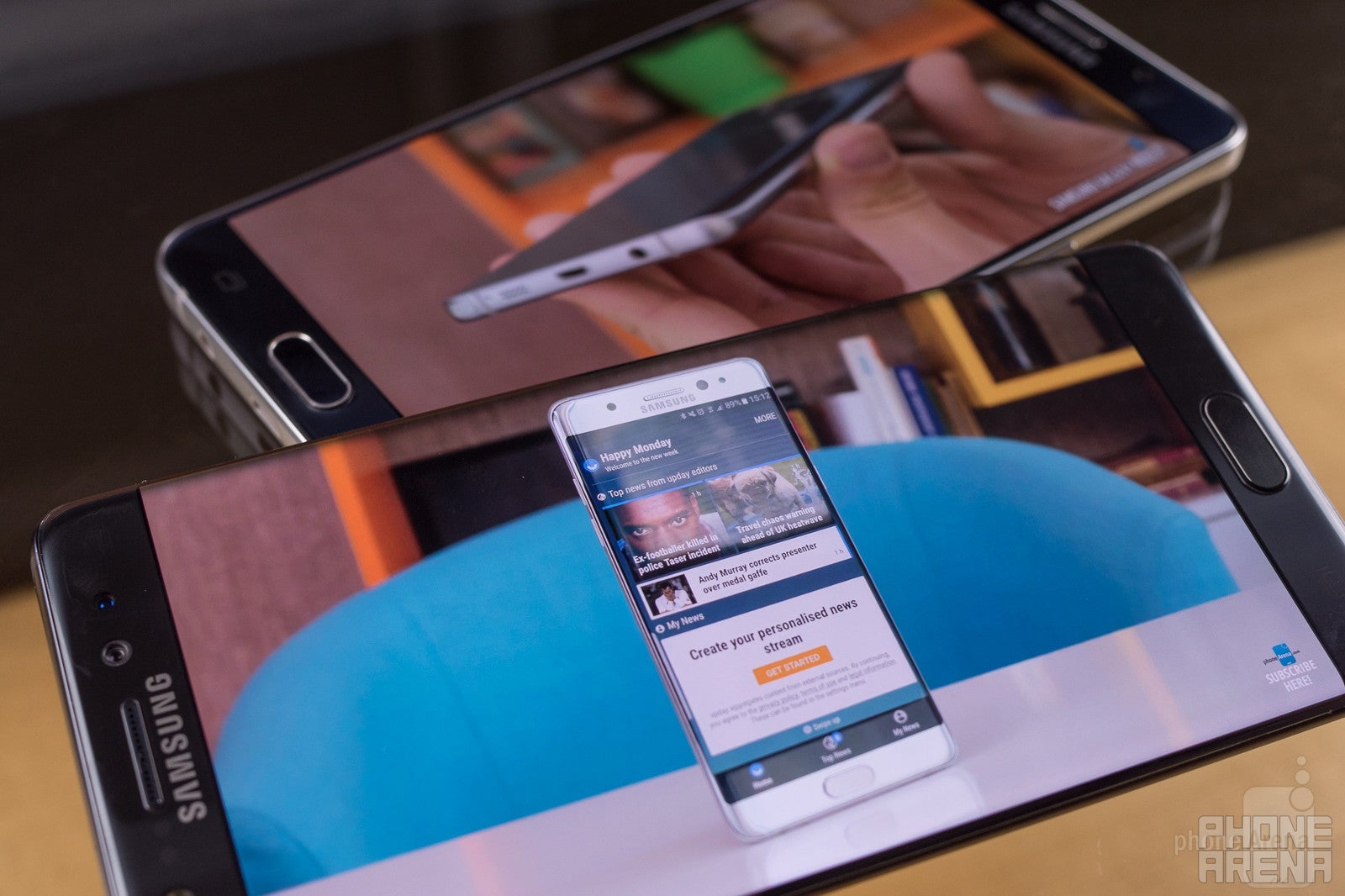
Samsung's speaker on the Note 7 sure looks a whole lot like it did on the Note 5, with its grille tucked away on the phone's bottom edge, but the Note 5 might have a slight lead when it comes to its ability to produce rich, satisfying sound – in some tests, the Note 7 came off a bit more shallow-sounding.
Luckily the Note 7 has a trump card, which it plays in the form of that previously-mentioned support for HDR-10 video. Hook up with a video provider using the standard, and you can watch content encoded to take full advantage of the Note 7's screen, with a picture just swarming with detail.
Call quality
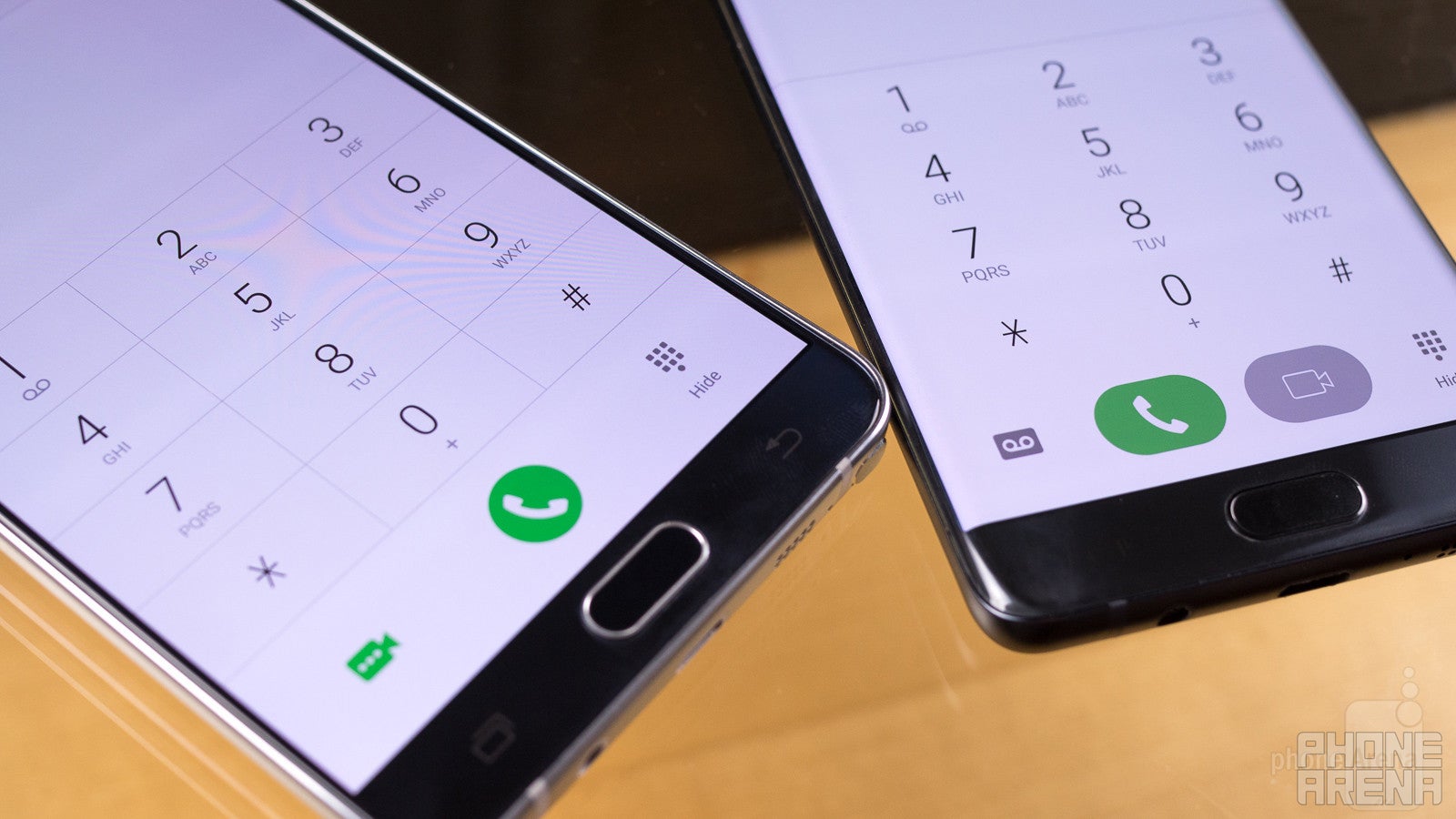
Calls sounded pretty solid on the Galaxy Note 5, and Samsung hasn't done much to change that on the Note 7. Our comments about the phablet's speaker still stand, so if you're taking special advantage of the speakerphone you might prefer the extra oomph of the Note 5, but for standard handheld voice calls we didn't notice a major change in quality between the Note 5 and Note 7.
Battery life
Bigger is good, but fast-to-recharge takes the cake

Sure, the new Note 7 is slightly thicker than the Note 5, but that helps give Samsung room to squeeze in the phone's significantly larger battery – 3500mAh to the Note 5's 3020. Unfortunately, that doesn't necessarily translate into similarly extended handset life, and the Note 7's power requirements seem to eat up a lot of that extra charge.
The larger battery also makes the Note 7 take longer to recharge than the Note 5, but only to the tune of 15 minutes or so. Both phablets support wireless charging, including wireless fast charging with the appropriate charger.
Conclusion
There are so many things the Note 7 does better than the Note 5, or offers features wholly missing on last year's model, that it's difficult to point to one main selling point for the new Note.
Maybe the biggest downside – and this is a huge matter of personal preference – is the lack of a flat-screen Note 7. We're sure that a fair number of established Note fans will be mourning the loss of their familiar display geometry, but there's just so much else the new Note does well that it's hard to imagine the majority of them holding a grudge for long; they'll poke around at the new Edge UX interface, learn to appreciate the phone's smooth curves, and likely begrudgingly admit that Samsung didn't ruin anything with this change.
Maybe the new Note could have gone further – pushed limits to 6GB of RAM or the like – but instead we get a nice balance of time-tested silicon and new features. And for every iris scanner that leaves a little more refinement to be desired, there's a waterproof S Pen adding a fun new way to get extra usability out of a beloved phone function.
With the new Galaxy Note 7, Samsung's not afraid to push its stylus-phones in a new direction, and even for die-hard fans of existing Note models, we think that new direction is one they'll come to appreciate.
Still, one big advantage the Note 5 has at this point that no one could take away from it: much lower price! Available at around $500 - $550, the Note 5 is considerably cheaper than the Note 7, yet offers much of the same goodness, including some of the major assets like the large screen, as well as performance and camera that are still considered great. If your budget doesn't necessarily allow you to splurge right now, we'd say going with the Note 5 would still be a legit decision.
Samsung Galaxy Note 7
Pros
- Water-resistance is great to have, and a waterproof S Pen even better
- The Galaxy S7's 12MP camera absolutely shines
- Samsung's latest Android UI is a step in the right direction towards usability
- Return of microSD give the Note 7 capacity to spare
Samsung Galaxy Note 5
Pros
- Flat screens still have a certain appeal, especially for media playback
- microUSB support means no compatibility problems with older accessories
- Audio sounds more well-rounded than the Note 7's output
- Considerably cheaper at this point

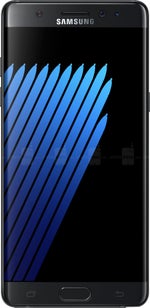
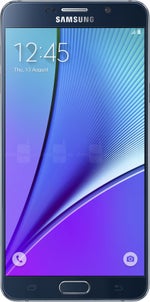
























Things that are NOT allowed: